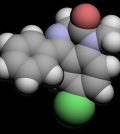Posts for tag "Technology"
Wave Sensors Integration with NexSens Buoys: A Cutting-Edge Solution for Wave Measurement
Real-time wave data supports accurate weather prediction, safe and efficient maritime operations, and provides valuable safety and operating condition information for recreation and commercial fishing. Understanding wave dynamics also helps with the design of protective coastal structures...
- Posted May 12, 2025
SonTek CastAway-CTD Meter Review
Lightweight and easy to use, the SonTek CastAway offers a convenient 3-in-1 solution for measuring conductivity, temperature, and depth profiles. At a 5 Hz sampling rate, the CastAway is designed for up to 1 m/s free-fall through...
- Posted December 2, 2024
YSI ProDSS Multi-Parameter Water Quality Meter Review
There’s no shortage of options when it comes to water quality monitoring equipment. If you’re looking for an all-in-one multi-parameter sampling meter, then the YSI ProDSS is a prime choice. Along with its field-rugged construction, backlit display,...
- Posted October 15, 2024
Wireless Mesh Environmental Sensing Network System Tested
Recent testing of a wireless mesh environmental sensing network system offers scalability and convenience to field scientists.
- Posted August 28, 2019
Eavesdropping Underwater With Marine Robots
University of East Anglia researchers have used silent marine robots to listen in on marine life, weather, and human sounds for improved monitoring capabilities.
- Posted June 26, 2018
Advanced Oxidation Processes for Wastewater Treatment
Recent research proves that adding a co-catalyst to Advanced Oxidation Processes (AOPs) renders them more efficient and effective, and reduces byproducts.
- Posted June 20, 2018
Treating Wastewater and Producing Clean Energy with Microalgae
A team of researchers is refining our understanding of wastewater treatment with microalgae, producing a sustainable source of energy and treatment.
- Posted June 8, 2018
Revolutionizing Conventional Solar Water Evaporation With Hydrogels
Researchers have created a low-cost, scalable hydrogel for use in desalination systems that produces more drinking water using less energy.
- Posted May 22, 2018
Bioinspired Mantis-Cam Enables Underwater Geolocation
Bio-inspired camera uses polarization signals from light to geolocate, enabling new underwater navigation technologies and revealing clues about animals and pollution.
- Posted May 17, 2018
Chiral Water Reveals New Pathways Toward Desalination and Purification
Serendipitously, researchers discovered artificial water channels, chiral water pathways, which hold major potential for new water treatment technologies.
- Posted May 17, 2018
Clean Water AI Puts Prevention of Waterborne Disease in the Palm of Your Hand
An independent developer used an AI Stick, a laptop, and a microscope camera to create a clean water AI device that detects and maps bacteria in real-time.
- Posted May 3, 2018
Cleaning Oil Spills with Materials Inspired By the Salvinia Effect
A new material inspired by the Salvinia plant may offer new hope for cleaning up oil spills and other superhydrophobic applications.
- Posted April 26, 2018
Buoy Data Powers Muskegon Lake Hypoxia Research
Experts call Muskegon Lake a “model Great Lakes estuary.” Two new studies detail its patterns of hypoxia and the ecological effects with unprecedented clarity.
- Posted April 20, 2018
Simple, Brilliant Water Quality Fixes From Environmental Engineering
A team of engineers has created multiple simple fixes for water quality problems, from stagnating water tower tanks to treatment of micropollutants.
- Posted April 17, 2018
Nutrient Sensor Action Challenge Bringing Better Technologies to More People
Federal agencies are partnered to sponsor a competition that will result in innovative applications of nutrient sensors on agricultural lands.
- Posted April 12, 2018
Double Disinfection for Wastewater More Effective, and Greener
A double disinfection process subjecting wastewater to low levels of chlorine and then low levels of UV light is most effective at killing pathogenic organisms.
- Posted March 30, 2018
Sensor Array Stretching Across the North Atlantic Reveals Drivers of Global Currents
Scientists have begun to present data gleaned from an array of sensors stretching across the North Atlantic, measuring what drives overturning and currents.
- Posted March 22, 2018
Titanium Dioxide Nanofibers Removing Diazepam from Wastewater
South African researchers have developed a technology using titanium dioxide nanofibers for removing Diazepam and other compounds from wastewater.
- Posted March 12, 2018
Underwater, Networked Drones Monitoring Water Quality
A team is developing and deploying networked drones and underwater robots to monitor water quality in real-time to more effectively protect the public.
- Posted March 6, 2018
First Global Water Monitoring Tool is Live: World Water Quality Portal in Action
The UN’s World Water Quality Portal will allow scientists and other decision makers to monitor certain water quality indicators remotely in real-time.
- Posted February 26, 2018






















